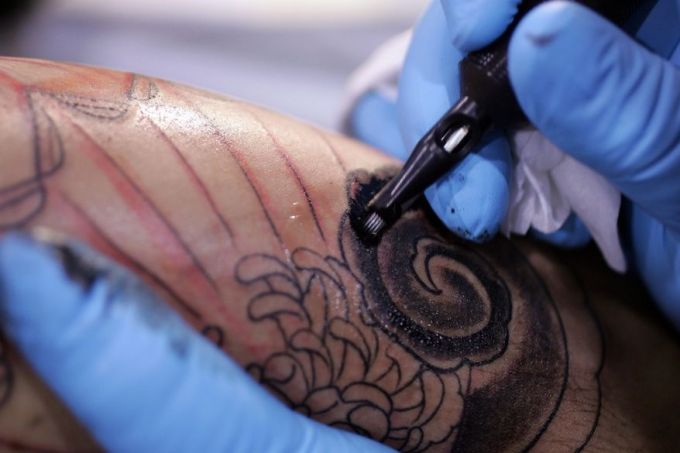ANALYSIS/OPINION:
Tattoos
have become such a cultural fixture that pollsters now track the trends
of those who favor the ink. The Harris Poll, in fact, interviewed 3,300
people about their tattoo sentiments to find that three in ten
Americans have tattoos – and there’s no partisan divide here. Equal
numbers of Republicans, Democrats and independents – about 28 percent of
them – have one or more tattoos.
And
most of the public is just fine with that. Tattoos are so mainstream
now that few are bothered with the permanent designs, even on the skins
of authority figures: 58 percent would not mind a U.S. President or
presidential candidate with a visible tattoo. And equal numbers felt
that way about a tattooed primary school teacher, judge or doctor.
Those
with the highest approval ratings are athletes, of course: 86 percent
of us are very comfy with a tattooed sports hero. Next come IT
technicians (78 percent) chefs (78 percent), police officers (70
percent) and bankers (64 percent). Among parents in the survey, 71
percent were comfortable with their child interacting with a
pediatrician who had a tattoo.
But alas, there’s regret out there too – and it’s increasing. Some rue the tattoo.
“With
tattoos on the rise, regrets have risen as well; though a strong
majority still has no regrets, nearly one fourth (23 percent) of those
with tattoos say they regret getting one – up from 14 percent in 2012,”
the poll analysis notes.
The American Society for Aesthetic
Plastic Surgery
reports the real numbers on this disappearing ink: about 46,000 people a
year opt for the pricey laser removal procedure, which can stretch into
three or four treatments and leave scars. Women account for 72 percent
of the business.
The
respondents in the Harris Poll were also asked to name their own
reasons for tattoo regret. The No. 1 reason that was cited: They were
just “too young” when they got the tattoo. In second place: the design
no longer fit their personality or present lifestyle, followed by “I got
someone’s name that I’m no longer with.” At the end of the list:
Complaints that the design was poorly done or looked unprofessional, and
last but not least, the tattoo “isn’t meaningful.”
To
tattoo, or not to tattoo? There is still a big age difference among the
inked and the non-inked. About half of those under 35 are tattooed
compared to 13 percent of the Baby Boomer set. Parents, for the most
part, were not eager to allow their kids under 18 to get a tattoo: only 8
percent would agree to that, compared to 76 percent who would allow
their child to get pierced ears.
Motivations
vary. Overall, a third of those with tattooed admitted their skin ink
made them feel more sexy and attractive, 19 percent said they felt more
“spiritual” with a tattoo.
The
Harris Poll was conducted October 14-19, 2015 among 2,225 U.S. adults,
and among an additional 1,093 parents November 6-16, and released
Monday.

